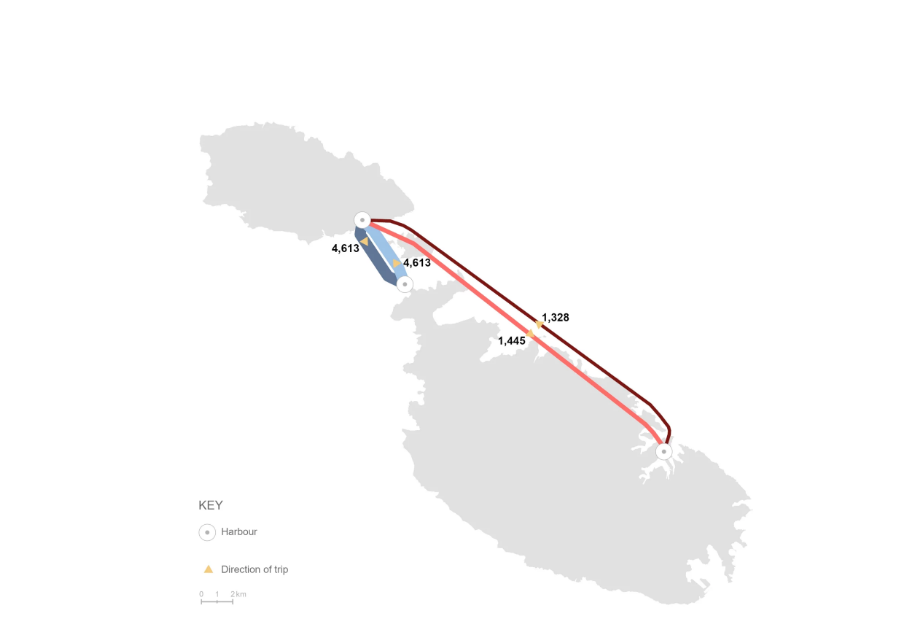Figures published by the National Statistics Office (NSO) on Friday show that a total of 1.6 million passengers travelled between Mġarr and Ċirkewwa during the third quarter of 2024. This reflects a decrease of 3.2 per cent when compared to the corresponding quarter of 2023.
Overall, the number of trips between Mġarr and Valletta during the third quarter amounted to 9,226, an increase of 0.2 per cent over the same period in 2023.
Notably, August registered the highest number of trips (3,122) or 33.8 per cent of total trips for the quarter. This coincides with the yearly tradition of many locals travelling to Gozo to celebrate Santa Marija.
Overall, between January and September 2024, passenger traffic from the Mġarr terminal was busiest on Sundays and Saturdays, while vehicle traffic was highest on Sundays and Mondays. On the other hand, passenger and vehicle traffic originating from Ċirkewwa was busiest on Fridays and Saturdays.

On the other hand, trips between Mġarr and Valletta through the use of the fast ferry service, amounted to 2,773, carrying a total of 320,199 passengers.
When compared to the same quarter in 2023, the number of trips between the two locations increased by 5.2 per cent and the number of passengers increased by 20.5 per cent.
Again, August marked the busiest month for travel between Mġarr and Valletta with a total of 977 (35.2 per cent) of total trips for the quarter and the highest number of passengers 120,220 (37.5 per cent).
db Foundation raises €8,419 for Karl Vella Foundation with MasterChef Malta Charity Dinner
These events form part of the db Foundation's ongoing commitment to supporting vulnerable members of society through impactful initiatives
Residential property prices rise by 5.7% in first quarter of 2025
The new figures show continued growth in Malta’s property sector
Youth4Entrepreneurship Gozo 2025: Youth invited to propose innovative digital solutions
The initiative aims to empower youth to become active contributors to Gozo’s development by addressing local challenges






